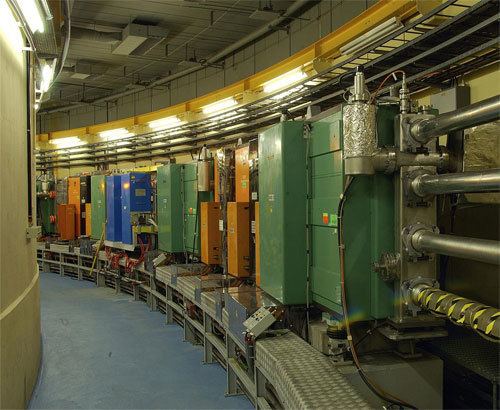 | ||
Proton synchrotron booster
The Proton Synchrotron Booster (PSB), a synchrotron, is the first and smallest circular proton accelerator in the accelerator chain at the CERN Large Hadron Collider injection complex. It contains four superimposed rings with a radius of 25 meters, which take protons with an energy of 6988801088243500000♠50 MeV from the linear accelerator LINAC 2 and accelerate them up to 6990224304708179999♠1.4 GeV, ready to be injected into the Proton Synchrotron. Before the PSB was built in 1972, LINAC 2 injected directly into the Proton Synchrotron, but the greater injection energy provided by the booster allows more protons to be injected and a higher luminosity at the end of the accelerator chain.
As part of the High Luminosity Large Hadron Collider upgrade, the PSB's injection energy is being increased for the same reason. LINAC 2 is being replaced by LINAC 4, which will provide an energy of 6989256348237920000♠160 MeV into the PSB. Another way LINAC 4 will enable the PSB to hold more protons is by providing hydrogen anions (H− ions) rather than bare protons (H+ ions). Because they have the opposite charge to the protons already in the booster, they bend in the opposite direction in a magnetic field and can be merged with the circulating beams. A thin foil inside the PSB at the merge point strips the electrons away and completes the merger.
The Low Energy Ion Ring performs a similar function for the lead ions used in the LHC, taking them from LINAC 3 and accelerating them for injection into the PS.
